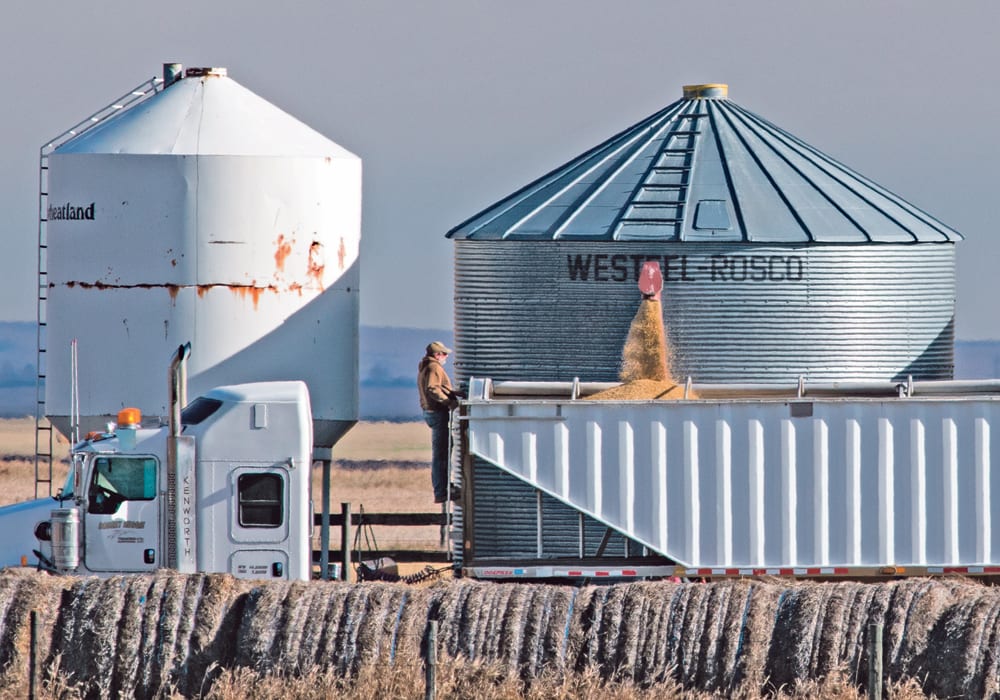A broker advises farmers to buy call options as a way to protect themselves in a downward trending market
Now is a good time to consider buying call options, says a commodity broker.
“Right now I’m pushing the option side because to me they’re a bargain,” said Errol Anderson, broker and author of the ProMarket Wire newsletter.
Call options that typically cost about $15 to $18 per tonne are going for about $10 per tonne.
That is because there is very little volatility in grain markets — prices are not yo-yoing up and down.
“What’s happening with grain prices is we’re just in a gradual bleed right now,” he said.
Read Also

Critical growing season is ahead for soybeans
What the weather turns out to be in the United States is going to have a significant impact on Canadian producers’ prices
Anderson feels storing grain is a risky strategy, especially in a downward trending market.
Call options are a way for growers to get paid for delivering their grain, pay some bills and still be able to participate in any future rallies if South America suddenly has a weather disaster.
There is a downside. A farmer who buys a call option will lose his premium if markets continue to bleed, but in this case it is a reasonable $10 per tonne or so depending on the specifics.
“It’s a glancing blow,” he said.
Not everybody agrees with Anderson’s assessment of grain markets.
Farm Credit Canada recently issued a trade report that said trade tensions and import tariffs are leading to “unforeseen price variations that are often sudden and widespread.”
“It is a period of high volatility,” said FCC chief economist JP Gervais.
The report looked at what happens to exports of different agricultural commodities during such periods.
Volatility tends to make buyers nervous, leading to reduced exports, but that is not the case with all commodities.
“While trade uncertainty produces hesitation among some buyers, it also opens new markets and causes buying sprees among countries hedging against higher prices in the future,” he said.
The report determined that canola and wheat exports tend to be more resilient than soybeans, pork and beef when markets become turbulent.
Gervais believes that is because Canada is such a big player in the world trade of wheat and canola. It is the top exporter of canola and the third largest of wheat.
He emphasized that price volatility isn’t necessarily a bad thing. For instance, canola sales to China in the May-July period of 2018 are up 25 percent over the same time last year as Chinese feed mills wean themselves off U.S. soybean meal.
However, Gervais said growers need to exercise more caution than usual when markets are roiling.
“We’ve got to ramp up our risk management skills,” he said.
Anderson thinks the biggest risk is storing crops in hopes of price improvement rather than taking simple steps to minimize the downside and participate in any upside to grain markets.
One strategy growers might want to consider is deferred delivery contracts, which allow them to avoid the typically weak post-harvest canola basis levels.
The basis is often halved by the time it comes to January-February-March delivery.
However, that requires storing the canola, waiting for payment and hoping crop quality doesn’t deteriorate in the bin.
Farmers might also want to consider buying a call on the deferred delivery contract. If they plan to deliver two truckloads of canola, they can purchase 80 tonnes of calls.
That strategy has a side perk.
“You don’t have to worry about starting up the auger when it’s 30 below,” said Anderson.


















